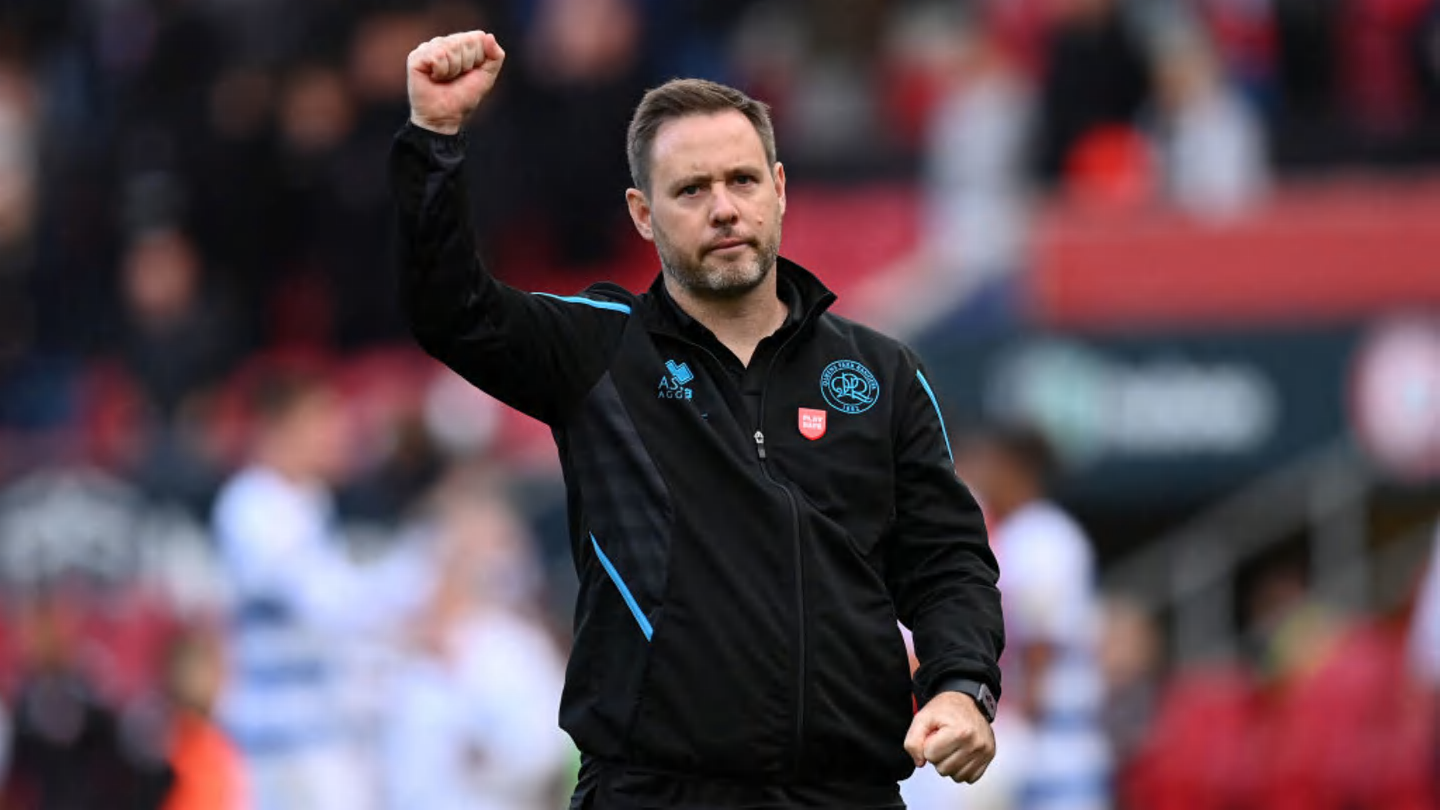The end of an error.
Steven Gerrard has been fired by Aston Villa following their 3-0 defeat to Fulham at Craven Cottage, a night that saw Villa achieve the rare trifecta of conceding a penalty, scoring an own goal and having a man sent off all in the same game for the first time in their Premier League history.
Was it an honourable act of self-sabotage or were they genuinely just that bad?
Only the players themselves will know. For Gerrard, it meant a rather awkward coach journey back up the M1 alongside the players who failed to give him the moments of magic he had so often craved in lieu, of course, of any clear and obvious attacking plan, system, stratagem, whatever. The air pods would have remained firmly glued in ears even if no music was playing all the way back to Birmingham. None was needed at that point, Chopin's 'Funeral March' aside.
Gerrard was appointed by Villa's CEO Christian Purslow, with whom he had grown close during Purslow's (fairly disastrous) spell at Anfield as managing director, on the back of an undefeated Scottish Premier League title. Pundits and journalists alike saw the role as a stepping stone to the Liverpool job, with Gerrard touted as the natural successor to Jurgen Klopp a few seasons down the line, such was the irrational and widespread confidence in the appointment.
Let's be clear: Gerrard's dreams have now gone up in smoke. He'd be fortunate to snag a Championship post next. But how did it go so wrong for the former Liverpool captain who had managed to rebuild Rangers in three seasons?
Michael Beale's notable absence

It says a lot that as Steven Gerrard was losing his Premier League job his former assistant Michael Beale was turning one down.
Having left his role with Villa in June, Beale currently has QPR top of the Championship table. He has even impressed enough in such a short space of time that Wolves offered him their vacant manager's position, only to be swiftly rebuffed by the man with 16 games as head coach under his belt.
There have been numerous reports that Beale was always the tactical brains of the operation on Gerrard's coaching staff, with the boss apparently left to pick the team, give them a few words of encouragement and send them out onto the pitch. The extent of this won't be known to anyone outside of the dressing room but Villa fans were quick to notice a substantial drop-off in on-field performances despite a promising summer transfer window.
In the words of goalkeeper Emi Martinez: “It’s the first time in 14 to 15 years of my career that the assistant coach does all the talking, Michael Beale. He knows so much about football, it’s just incredible. He does all the training sessions, he takes all the important meetings... obviously, Stevie G talks too."
“In every club, the manager does all the talking and the assistant helps. With Michael, we felt him and Stevie G are both the managers.”
Martinez probably has no idea how inadvertently damning those words were at the time. He may well do now. Still, at least he has confirmed Gerrard did at least possess both the capacity and humility to talk to his players.
Narrow, narrow and narrower
Following Beale's departure as an important factor are the tactics (or lack thereof) that Gerrard employed throughout his time at Aston Villa. There is one overriding theme here: the complete absence of width. This was intentional and served Gerrard well at Rangers, where Borna Barisic and James Tavernier would maraud forward at will from full-back.
This tried and tested system, one from which Gerrard rarely - if ever - deviated in Scotland, didn't work with Villa beyond the first handful of games. And even those can be attributed to that wonderful, almost mythical thing: the new manager bounce.
After that, when results started to take a nosedive, Gerrard (or likely Beale) seemed to stumble upon a variation of his narrow 4-3-3 that led to some impressive victories.
A 4-4-2 diamond meant Gerrard could pair Ollie Watkins and Danny Ings, pack the midfield and let Phillipe Coutinho (more on him later) play in his favoured number 10 position without too much (any) defensive responsibility. The alteration led to three straight wins against Brighton, Southampton and Leeds with eight goals scored and none conceded. This, it seemed, was to be the formula moving forward.

Results were inconsistent for the rest of the season but it did appear there was a template to work with, a foothold from which to climb the Premier League table after a full pre-season with the players working on that shape. Boubacar Kamara was signed in the summer to anchor the midfield, Coutinho's loan spell was made permanent and every winger at the club bar Leon Bailey was either sold or sent out on loan.
Which makes it all the more baffling that on opening day against Bournemouth, Gerrard once again lined up in a 4-3-3, with Coutinho beyond ineffectual as a left inside-forward and Ings completely isolated as a lone striker. From then on, Gerrard flitted between the two approaches and his rotating cast of attacking players at random, hoping that something would stick as Villa struggled to create chances despite their glut of talent at the top end of the pitch.
There is no greater summation than the 1-1 draw away to Nottingham Forest, during which Villa failed miserably in attempting to break down their inferior opponents (despite starting both Coutinho and Emi Buendia as 10s) and resorted to hitting hopeless crosses into the box -16 in total, 15 of which were unsuccessful. Left to his own devices Gerrard simply had no answers for even the most primitive of defensive set-ups.
Which brings us neatly onto the artist formerly known as Philippe Coutinho.
The Coutinho signing

Perhaps the most damning aspect of Gerrard's tenure at Villa Park has been the abject performance of marquee signing Philippe Coutinho, who had some bright moments while on loan at the club but ultimately showed nowhere near enough to warrant making the transfer permanent, let alone for Purslow to announce it at the end of season awards as a massive statement of intent.
The problem quickly became twofold; not only was Coutinho drastically underperforming as the team's creative hub and seemingly undroppable due to his relationship with Gerrard, he was also keeping Emiliano Buendia out of the team.
Signed for £38m from Norwich in June 2021, Buendia was part of the triumvirate brought in to replace Jack Grealish along with Ings and Bailey. It took him a while to get going in B6 but it was clear Buendia's tenacity, work rate and technical ability would be vital to Villa moving forward. Enter Gerrard, Coutinho, and repeated substitute appearances during which he'd do more in 20 minutes than the third most expensive player of all time had done in the previous 70.
Both Gerrard and Coutinho are symptomatic of Villa's desire to operate as a big club without actually laying the groundwork to do so. Big names for big fees that made little sense in the long-term and even less in the short, neither suited the group of players they were joining. In fact, they have ended up doing the exact opposite of what they were intended to do, setting Villa's ambitious owners Nassef Sawiris and Wes Edens back even further on their timeline towards European football.
The captaincy debacle and form of John McGinn

Gerrard had his favourites, not unique for any manager. His insistence on their inclusion, however, becomes quite hard to explain when they are often the two worst, or at the very least most forgettable, players on the pitch.
John McGinn's form for Aston Villa had been a cause for concern a long time before Steven Gerrard's arrival. Which made it all the more baffling that Morgan Sanson (one season removed from playing Champions League football for Marseille) was essentially banished with little logic or explanation and McGinn was eventually handed the captaincy at the start of this season, replacing Tyrone Mings.
The decision to strip Mings was a controversial one, to say the least. Despite his occasional lapses of concentration on the pitch, he had proved himself a capable leader and cemented his status as one of the most popular figures in the dressing room.
Whether he merited a starting spot given the arrival of Diego Carlos was certainly open to debate. But for Gerrard to take the armband, question Mings' attitude in the process and then give it to a player hopelessly out of form was inexplicable. It was a risk that he didn't need to take and, like so many other things, it soon blew up in his face.
The former Villa manager was forced to recall his ousted captain to the starting line-up by only the second game of the season. Following the 1-1 draw against Manchester City and 1-0 win over Southampton in September he was hailing Mings' character and 'guts', all while McGinn was continuing to huff and puff in central midfield without a single noteworthy performance to his name.
To surmise, you don't need to look much further than the final capitulation against Fulham. Gerrard's tenure ended with Watkins shunted out wide on the left, Coutinho an unused substitute, Buendia given half an hour to change the game, his less-than-influential captain hauled off early and Mings scoring an unfortunate own-goal to put that final nail in the coffin.
A mess of decision-making and muddled thinking from the start, in the end, it's far more difficult to find something that went right for Steven Gerrard at Aston Villa.
Source : 90min